
Oyster novice? The mignonette recipe and the shucking instructions below are all you need. Well, that and a proper oyster knife. And fresh, local oysters. And good friends. And a bottle of bubbly. That’s it. Swear. There’s no right or wrong. Slurp away.–Renee Erickson and Jess Thomson

Why Our Testers Loved This
Our recipe testers loved the simple shucking method described in this recipe and were happily slurping oysters in no time at all. They found the champagne mignonette to be a perfect pairing with fresh oysters.
Jackie Gorman described the recipe this way: “If you have access to good, fresh, local oysters, you have a very elegant course to impress folks with or just a lovely “happy hour” with someone you care about.” We couldn’t agree more.
Notes on Ingredients
- Champagne vinegar–Champagne mignonette is a simple and classic sauce, and we don’t recommend substituting a different type of vinegar, as the taste will change considerably. Champagne vinegar can be found at well-stocked grocers and specialty markets and is available online.
- Oysters-Fresh oysters are critical here. Buy locally, if possible, and look for ones that have tightly closed shells without any damage.
Step-by-Step Instructions
- Make the champagne mignonette sauce. Combine the shallots and vinegar in a small dish and chill until you’re ready to serve.
- Shuck the oysters. Use an oyster knife to pry open the oysters, then carefully cut the oyster muscle free.
- Serve oysters. Arrange the oysters in their shells and liquor on a platter and serve with lemon wedges and mignonette sauce.
Common Questions
Some words of advice on how to get good at shucking oysters from the author of this recipe from the authors:
1. Watch shuckers. When they open a Northwest oyster, they start at the hinge end, prying the oyster open with what looks like almost zero effort. Then they cut the oyster’s muscle from its shell, turning the flesh over and revealing the oyster’s smooth, plump side.
2. In France, it’s usually done differently. Instead of the hinge end, they shuck the oyster from the side, where the muscle attaches. Then they release the fleshy part of the muscle from the oyster’s top shell, leaving the firm part of the muscle attached to the bottom shell to prove the creature is still alive.
I love that tradition because it means that after you eat the muscle, you can use the flat side of a fork to scrape the scallop-like attachment from the shell, then drink the oyster’s liquor separately.
3. Although I hew to American convention at my restaurants (including serving oysters ice-cold, per health department standards, instead of just cool, as in France), I like how visceral and drawn out the experience is in France.
Raw oysters will stay fresh for up to 2 days if stored in the refrigerator on ice. Once you have put them out for serving, they should be consumed within 2 hours.
Healthy, fresh oysters should be plump and shiny, with liquid surrounding them, and have a beige color. If the oyster has an off or fishy smell, looks cloudy, dry, or withered, or has a grey, brown, black, or pink color, toss it out.
Pro Tips & Troubleshooting
- Use an oyster knife for shucking the oysters.
- This recipe is suitable for gluten-free and dairy-free diets.
Want to Save This?

Write a Review
If you make this recipe, or any dish on LC, consider leaving a review, a star rating, and your best photo in the comments below. I love hearing from you.–David
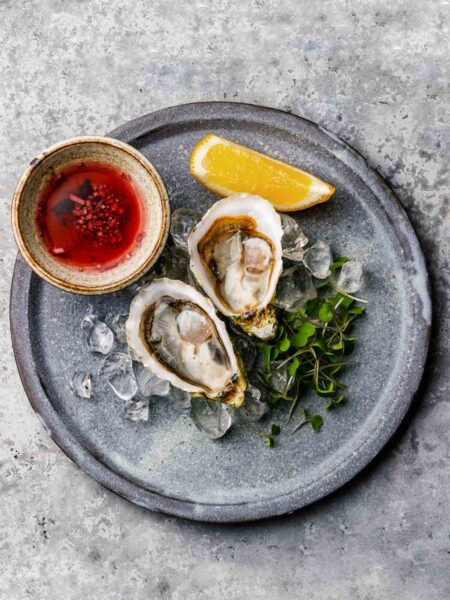
Raw Oysters with Mignonette Sauce
Equipment
- Towel; heavy-duty glove; oyster knife
Ingredients
For the mignonette
- 1 large shallot, minced
- 1 cup Champagne vinegar
- Freshly ground black or pink pepper, (optional)
For the oysters
- 2 dozen fresh local oysters, chilled and well rinsed (stored in the refrigerator, cupped side down, on a plate covered with a damp towel)
- 1 medium lemon, cut into wedges
Instructions
Make the mignonette
- In a shallow serving bowl, stir together the shallots and vinegar. Cover and refrigerate until ready to serve or up to 2 days.
Shuck the oysters
- Just before serving, shuck the oysters by opening them, one at a time, using the typical American technique, the hinge method:Start with a soft, clean towel in your left hand. Hold the cupped part of the oyster in the palm of your hand on top of the towel, with the hinge (pointed) end toward your wrist. (You can put a heavy-duty glove on the hand holding the oyster if you're shucking a lot of oysters or feel accident-prone.)
- Using your right hand, insert the point of the knife into the hinge of the oyster, pressing gently on the hinge until you feel it pop open. (Some people say you press the oyster onto the knife instead of the knife into the oyster; in either case, placement is more important than pressure. This process should not cause you to break a sweat.)
- Wipe the knife clean on the towel. With the oyster just partway open, slip the knife’s blade into the shell. Carefully follow the right side of the top shell with the knife to cut the oyster muscle free, then remove the top shell.
- Wipe the knife again, then carefully cut the muscle off the bottom shell, taking care to reserve as much of the oyster’s natural liquor as possible. (If you prefer, use the knife to turn the oyster over in the bottom shell.) Remove any sneaky shell pieces that may be wandering around in the liquor. Repeat with the remaining oysters. Arrange the oysters on a platter.
Serve and slurp
- Serve the raw oysters immediately alongside the mignonette, which you may want to sprinkle with pepper to taste. Set out a bowl of lemon wedges and napkins and set a spoon alongside the mignonette so guests can add as much as they’d like to each oyster. Slurp to your heart's content.
Notes
- Serving–Raw oysters should be consumed within 2 hours of serving.
- Using the right tool–Use an oyster knife for shucking the oysters.
- Dietary–This recipe is suitable for gluten-free and dairy-free diets.
Explore More with AI
Nutrition
Nutrition information is automatically calculated, so should only be used as an approximation.
Recipe Testers’ Reviews
If you have access to good, fresh, local oysters, you have a very elegant course to impress folks with or just a lovely “happy hour” with someone you care about.
I highly recommend getting an oyster knife. It’s a small investment. If you like oysters, you either already have one or need to get one. Having someone who’s good with an oyster knife is very helpful. It takes next to no time to throw this together.
In the time that person spends shucking the oysters, you can throw together the mignonette recipe. A mignonette is my favorite “sauce” for oysters. I’ve been known to dunk bread in it as well as sip some on a spoon. I had no idea how easy it is to make.
I must say that using a whole cup of Champagne vinegar would probably make enough mignonette for the entire neighborhood. You really don’t need to measure anything. Just pour the amount of Champagne vinegar you’ll need into a small ramekin or bowl, add minced shallot, and a bit of freshly ground pepper. That’s it.
Purely optional but highly recommended is a bottle of Champagne to have with the oysters. Sublime!
Gosh, there are few things more satisfying than a bounty of raw oysters on the half shell EXCEPT raw oysters you’ve paid half as much for because you bought them alive and CLOSED from a fishmonger.
We learned how to open these bad boys this past summer on Cape Cod, and the method described here is spot-on.
Using the instructions as a refresher, I had no trouble thwarting the “rock” to gain access to the salty, plump bivalve meat. We have our favorites around the Northeast coast near Long Island and Cape Cod: Wellfleet, Provincetown, Beausoleil, and Rocky Reef—you can be sure we’ll enjoy these Atlantic oysters a lot more often with this new skill.
Choose a knife: not just any old oyster knife will do, as there are styles that are regional for a reason. Atlantic oysters tend to be big and short, so we use a New Haven-style knife, which has a lightly upturned tip to protect the meat.
Next, use a towel or glove! Nothing will ruin a party faster than a trip to the ER, so take your time and protect your hand. Lastly, contrary to the instructions, once you get into the hinge, keep going to sever the muscle from the top shell (don’t wipe the knife).
Oh, by the way, trust your instincts: You know what a good raw oyster looks like. After opening the shell, if the meat is not plump, glistening, and briny like the sea, toss it. It’s obvious. Now good luck! And when can I come over?
This is certainly not a recipe. If you know how to shuck oysters, you can get everything you need from the title.
Get some excellent oysters, local or not—just make sure you know where they came from and that they’re fresh and properly handled since you’re eating them raw. Shuck them and serve them with a mixture of vinegar and shallots. That’s it.
I had bought an oyster knife to learn how to shuck oysters a while back and never did. So this was a perfect test for how well the instructions work on someone who had never done it before.
The mignonette recipe instructions worked great and produced lovely oysters.
The first couple took a bit of tinkering because I was apprehensive, but then it took about 20 seconds or so per oyster. The key is to be careful not to puncture the oyster and preserve as much of the oyster liquor as possible.
I served fresh gulf oysters on a bed of ice with the mignonette, and I also made another sauce for variety using lime juice, cilantro, jalapeño, and shallots. Both were great, but we actually enjoyed the mignonette a bit more. Even with the vinegar, the flavor of oysters shone through.
Definitely keep at least 2 cloth towels on hand while shucking, as the instructions suggest. You’ll need those to wipe the knife to get rid of the tiny pieces of broken shell stuck to it.
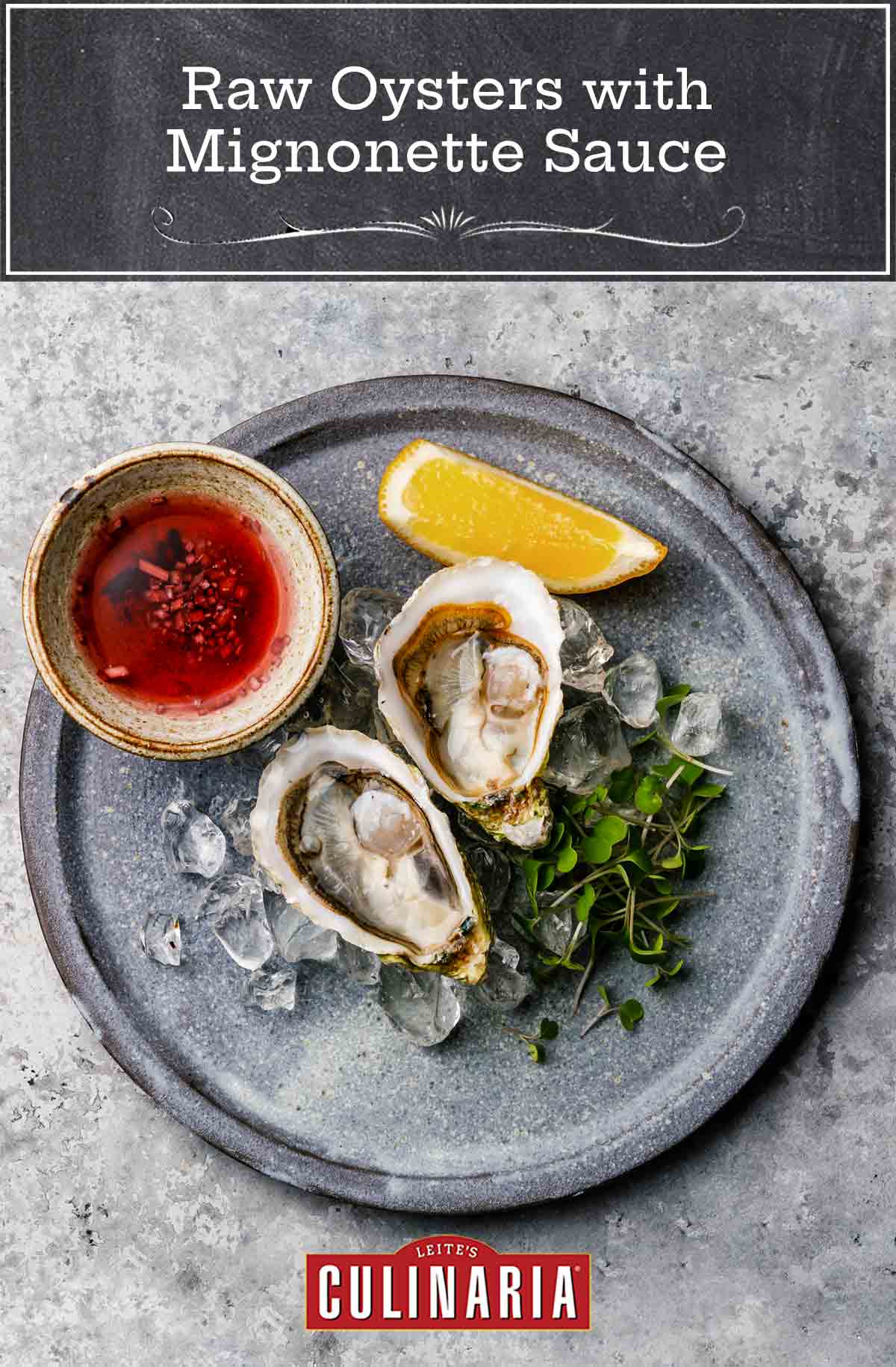
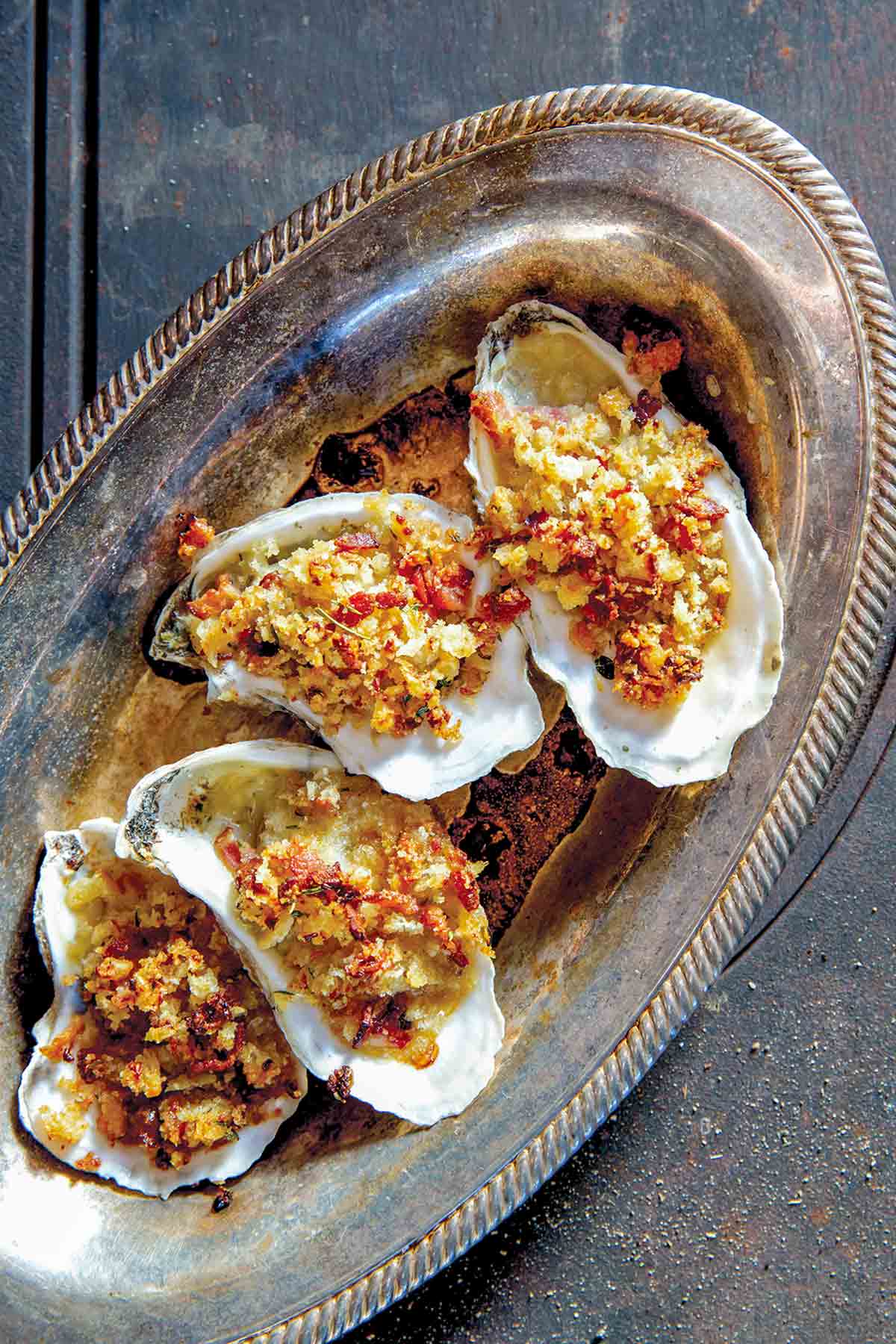
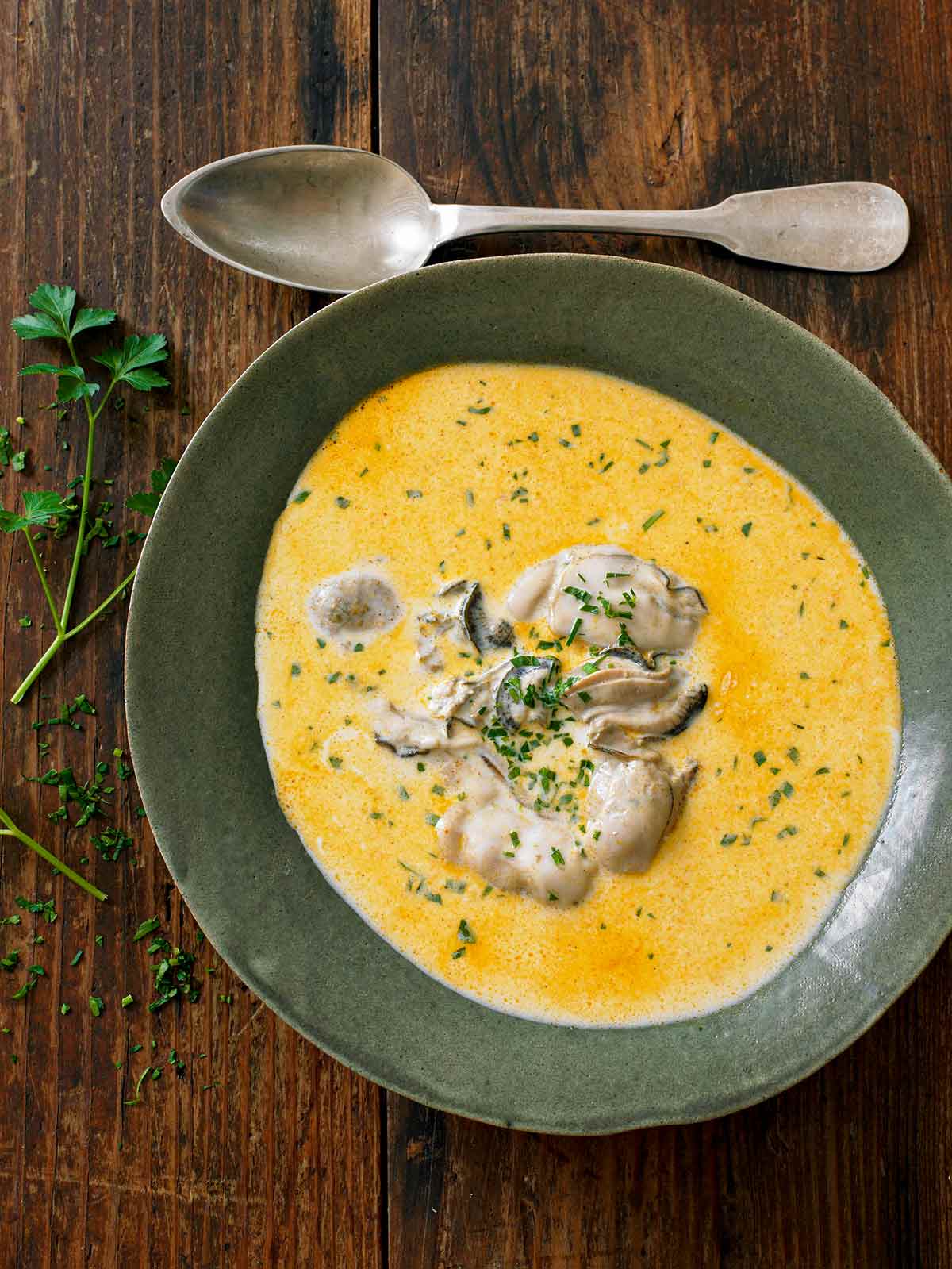
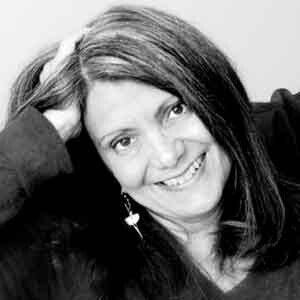
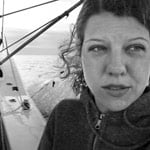











Do not be fearful of becoming ill from a raw oyster. We had an oyster fest in our city and 35,000 oysters were consumed in one weekend and everyone was fine. If you are concerned about eating raw oysters, just order them as Oysters Rockefeller. They are wonderful! Spinach, broiled with garlic butter and Parmesan cheese on an oyster. Fantastic. Anything with butter and garlic is wonderful. Eating oysters raw during coldest months of the year is the safest time to enjoy them.
Whoa, that’s a lot of oysters to shuck, Stu! And thanks for reassuring those who are leary.
One more thing that oyster novices need: a glove that is impervious to sharp knives. Ask me how I know and I will tell you that I almost lost the use of my thumb when an oyster knife slipped. It can be a very serious – and, costly (in many ways) – “accident.”
Yep, absolutely, Ouida. Which is exactly why we call for a glove in the instructions. Thanks for reinforcing that.